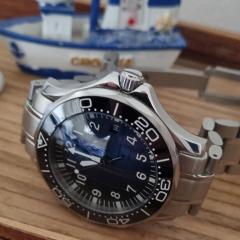Missing roller jewel
-
Similar Content
-
Recently Browsing
- No registered users viewing this page.
-
Topics
-
Posts
-
By nickelsilver · Posted
I have a little milling attachment for my WW lathe, but very rarely use it and not for wheel and pinion cutting. For that I use a small Sixis 101 milling machine. I normally do direct dividing, but sometimes have to do an odd count and use the universal index which also fits on the Sixis. Back in the day when I didn't have a mill, I would cut gearing on my Schaublin 102. It has a universal dividing attachment which fits the back of the spindle. Both it and the one for the Sixis are 60:1 ratio, and with the set of 4 index plates I can do almost any division. When I've had to do a strange high count prime number, I print a disc with the needed division and just place the plunger on the dot. Any position error is reduced by a factor of 60 so still plenty accurate. The machines are a mess in the pics as I'm in the process of making a batch of barrels for a wristwatch 🙃. This is the Sixis. The head can also be placed vertically, as can the dividing spindle. Dividing plates. The smaller ones fit another dividing spindle. Universal divider for the Sixis. I put it together with parts from an odd Sixis spindle that takes w20 collets, like the Schaublin 102, and a dividing attachment from a Schaublin mill. The dividing attachment for the 102. The gear fits in place of the handwheel at the back of the headstock. And the little milling attachment for the WW lathe. I just set it on the slide rest to illustrate the size, you can see from the dust on it it really doesn't get used much. I think only when I change bearing in the head, to kiss the collet head seat (grinding wheel still in the milling attachment). -
I read a lot about the quality (or lack thereof) of Seiko's 4R, 6R, 8L movements...or more specifically the lack of regulation from the factory. Especially when compared to similar priced manufactures using SW200's or ETA's. I thought I'd ask those more in the know, do the 4R's and 6R's deserve their bad reputation, is it fairly easy for someone with minimal skills (or better yet a trained watch mechanic) to dial in these movements to a more acceptable performance. For background I spent more on a 1861 Speedy years ago, expecting that the advertised 0-15s/d would probably perform more like 5-7s/d. In reality it's been closed to 2-4s/d.
-
@ChrisInOz your not Chris as in Clickspring are you?🤪 looks similar to some solutions I have seen him do. Tom
-
Potentially not the right place to post this and it's one of those where I'm not looking for a solution but rather thought you'd like to see it... Picked up a sketchy looking 6105-8000 the other day, the dial on which I've never seen the likes of before... The paint has literally solidified and lifted away from the dial in places, I'm some parts completely (and has been touched up with a matte black). I showed it to someone who works on and has a healthy obsession with these things - they told me they've seen this before on less than a handful of old Seiko dials, and think it's caused by water sitting on the sides and corrosion. It's quite a mess, but at least most of it is still there! Not sure about that relume either, though I should add I went to this eyes wide open price wise and the rest of the watch is good. Pics:
-





.thumb.jpg.19a9c4ff164d78d516aa9f05a063752b.jpg)



Recommended Posts